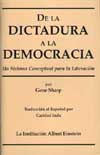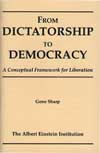
Title: A Failure of Capitalism
Author: Richard A. Posner
Publisher: Harvard University Press 2009. 346 pp. 978-0-674-03514-0
- Click on the "Free 2-day shipping" icon on right for a reduced price offer, if you wish to purchase this book
Richard Posner es un juez de Chicago, quien fue nombrado por Ronald Reagan y comparte una página web con Gary Becker, profesor de la Universidad de Chicago y Nobel de Economía, donde, desde una perspectiva conservadora, analizan temas económicos principalmente de EE.UU.
En el reciente y muy interesante libro "A Failure of Capitalism" Posner analiza y trata de obtener lecciones de la crisis económica y financiera del 2008-2009. Atribuye sus principales causas a la política monetaria expansionista de la Reserva Federal (RF), particularmente en los años 2000´s, y a la desregulación financiera (junto con la falta de coordinación de la regulación restante) comenzada en los 1980´s. En el primer tema difiere del reciente análisis de Bernancke y en el segundo básicamente coincide con él. El análisis de Bernancke fue presentado anteriormente en Democracia Participativa (El controversial análisis de Bernanke... )
Como Posner señala en la introducción el libro presenta un análisis simple de temas complejos sin ser simplista, realmente al alcance del público en general. Posner hace un fuerte caso de por qué la expansión monetaria, acentuada por la entrada de flujos financieros del exterior, se reflejó en la burbuja del mercado de viviendas, en las prácticas más agresivas y riesgosas de los bancos comerciales y otras instituciones financieras, así como en la muy baja tasa de ahorro nacional de EE.UU. que determinaron la falla de mercado en el área financiera. Además, considera que hubo una falla del gobierno por las políticas monetarias y desregulatorias de las que culpa específicamente a Greenspan, Bernancke, Rubin, Summers, Paulson y Cox (p. 259).
- Hits: 18384

